Summer in Japan can be hot and humid, combine that with the city crowds, a lot of walking, getting around on public transport, minimal use of air conditioning and the rainy season and you might reasonably wonder if it’s a good idea to plan travel to Japan in summer at all.
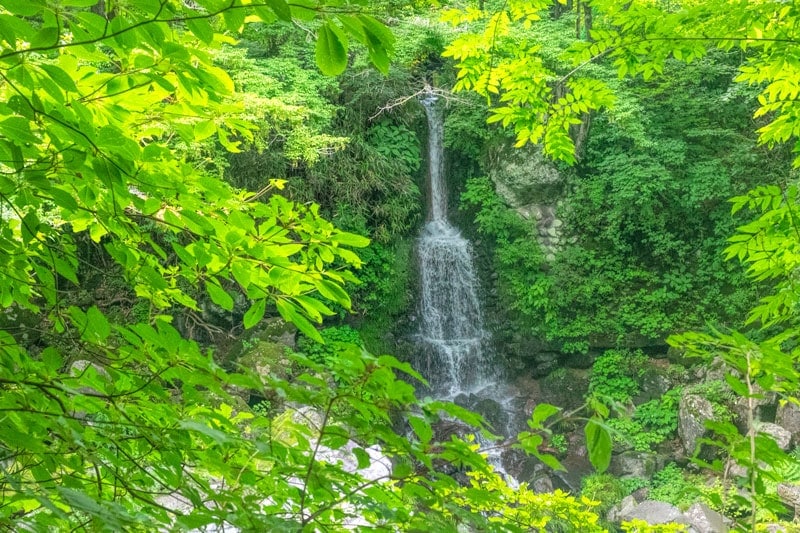
For us it is. The promise of summer festivals, fireworks, lush greenery and seasonal flavours is too much temptation to resist so I thought I’d share our top tips for beating the heat and enjoying summer travel in Japan.
Table of Contents
- The seasons in Japan
- Tips for surviving Japan in summer
- 1. Stay hydrated
- 2. Daily Sunscreen
- 3. Wear your sunglasses and hat
- 4. Pack cute and comfy shoes
- 5. Take care of your skin
- 6. Wear natural flowing fabrics
- 7. Eat cooling summer foods
- 8. Keep an umbrella or lightweight rain jacket handy
- 9. If you’re melting in the heat, get out of the city
- 10. Put on that insect repellent
- 11. Pack your antiperspirant
- 12. Try the local Japanese body wipes
- 3. Carry a lightweight towel
- 14. There’s no shame in booking a hotel with air conditioning
- 15. Take a light jacket or wrap
- Top Japanese summer destinations
The seasons in Japan
Japan really is stunning in all 4 seasons, with a bit of planning summer is a beautiful time to experience the county. In case you are wondering the seasons in Japan are:
Spring – From March until May is springtime. Through much of Japan including Tokyo, Kyoto, Osaka and Hiroshima the cherry blossoms will bloom in an average year during the last week of March and the first two weeks of April.
Summer – June until August is summer in Japan and it can get very hot and humid. Across the island of Honshu, you will experience the heat but it feels the most intense in the cities like Tokyo where the moisture in the air can make the temperature feel like it’s 40° when it is really in the low to mid 30s. August is usually the hottest month.
Autumn (or fall) – during the months of September until November you can feel the biggest change in temperature. During early autumn it may still feel summery with the daytime temperatures still in the high 20’s but by November the lows are back in the single digits. On Honshu, the leaves colour up around the main cities in late November and may remain that way into the first week of December.
Winter – in the months from December to February you won’t experience snow in all parts of Japan, in cities like Tokyo, Osaka and Kyoto it’s very rare to have snow settle on the ground for more than a few hours at a time. I have however experienced snowfall in each of these cities and you don’t have to take a train ride very far north to experience snow on the ground for extended periods.
The weather varies so much around the country that it really is impossible to include temperature expectations but I find this site very useful to predict the weather when I am packing for my trip as it has a 2-week advance forecast. The link is currently set to Tokyo but just add the nearest city to your destination in the search bar to get details from around the country.
Tips for surviving Japan in summer
1. Stay hydrated
Keep a water bottle with you as you travel around. In Japan it’s true that you are very rarely far from a vending machine, we’ve even found them at the top of a mountain while hiking, never the less good hydration requires regular sipping and it’s best to keep a bottle with you. We find the stainless steel vacuum bottles ideal, they’re light, keep drinks hot or cold for hours and don’t leak or get condensation on the outside so everything else in your bag stays dry.
In the heat, it’s very easy to become dehydrated and experience heat-related symptoms especially if you aren’t used to the humidity, it does sap your energy. The cool liquids will help you feel better in the heat too.
For the best effect avoid sugary and caffeine-loaded drinks, straight water is good but there are also some drinks designed especially to support your body in keeping its fluids and salts balanced. One of the most widely available is called Pokari Sweat, yes it’s an awful name, things do go amiss in the translations sometimes but if you’re having trouble with the name just pretend it’s Japanese for Gatorade. It’ll help replace fluids and balance ions.
2. Daily Sunscreen
You don’t want sunburn to ruin your trip and you’ll likely spend a reasonable amount of time outdoors during your travels. The best sunscreen is the one that you’ll happily wear and finding that perfect one can take some trial and error so check out our faves in our ultimate sun protection article.
My favourite face sunscreen is Biore watery essence which was a discovery in Japan years ago, I just can’t find anything that comes close but unfortunately, it’s not stocked in stores in Australia. It keeps my very fair skin burn-free, it sits perfectly under makeup providing a smooth base, reapplies well and doesn’t melt into my eyes. I buy it in bulk on trips to Japan and can now also top up my stash online. It’s SPF 50 (the UVB filter) and PA++++ (the UVA filter).
** If you’re looking at it and notice it says 2014 on the label that doesn’t mean it’s old stock, it’s the year it won an award. This stuff is popular and buying it in-store or online it’s always had a good long expiry date. When I get to Japan I buy 4-5 tubes at a time.
3. Wear your sunglasses and hat
Don’t forget to protect your eyes and the top of your head from the intense sun. Caps for women aren’t commonly worn by Japanese women unless they are quite young but as a foreign visitor, it is not rude or inappropriate, just less common.
While I love the convenience of a cap and how well it stays on my head I have more recently started taking a packable sunhat with a medium brim to give a bit more UV protection. These are more widely available now and because they withstand being crushed you can pack them into a suitcase. Many of them also offer 50+ UV protection to your head too.
4. Pack cute and comfy shoes
If you’re new to travelling in Japan there are 2 things to keep in mind when it comes to shoes:
i) You will walk a lot, there’s going to be no trouble ticking off your 10,000 daily steps, probably 2-3 times every day. It’s the local culture here, the way places are laid out and a side effect of predominantly using public transport.
ii) You’re probably going to take your shoes on and off many times a day, depending on the type of trip you’re doing. People’s homes, some temples, certain restaurants, traditional hotel rooms, to get to the bathroom at the sake brewery, and a whole variety of other unexpected places.
Wear what is comfortable for you, something that is well worn in preferably, I have made the mistake of packing a new pair of shoes before and will never do that again. One of my personal favourites for travel shoes is the Frankie4 Nats.
I bought my first pair because they were podiatrist-designed and I’d been struggling with plantar fasciitis (heel pain) for some time. I’ve added to my collection over the years and I wear several of the different styles but I particularly love the Nat’s in Japan as they have an elasticated gusset so they have full foot support when worn either with or without laces. Slipping out the laces makes them so easy to slip on and off throughout the day.
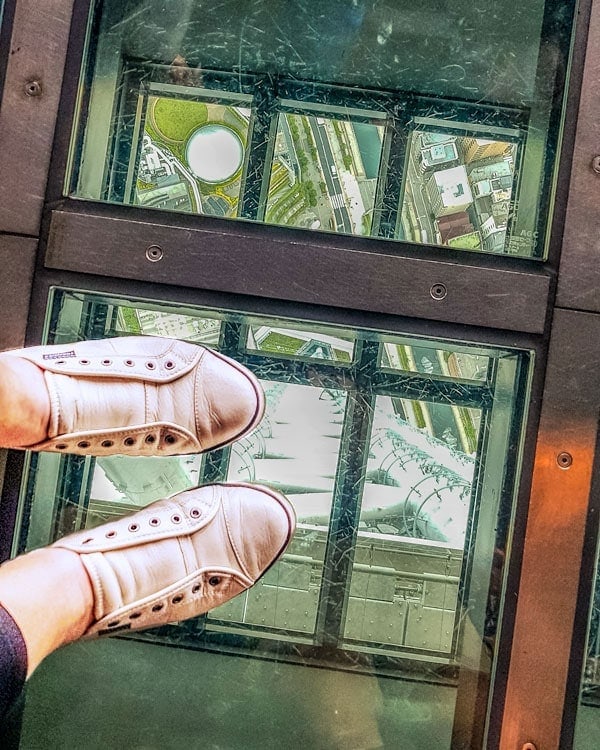
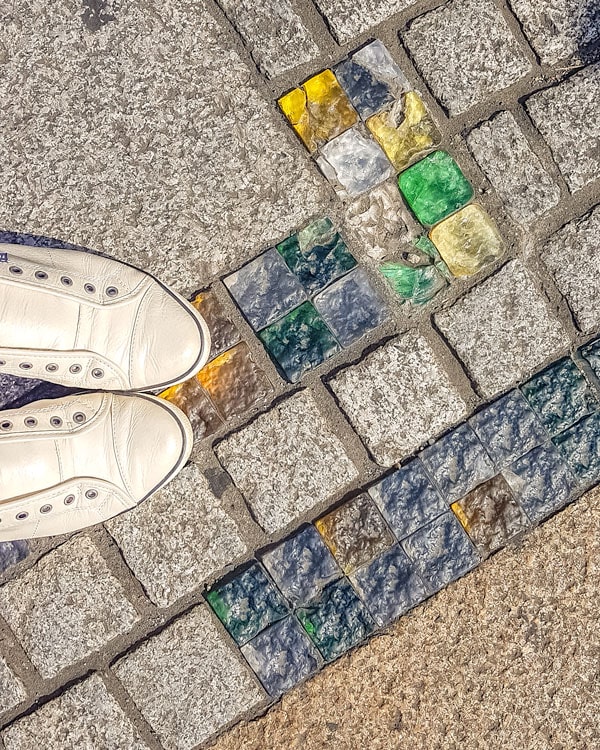
5. Take care of your skin
The sun, air conditioning and being in a different climate or environment can all play havoc with your skin. When we travel in Japan my skin will become dehydrated more easily than usual, especially on my hands and body. The good news about summer in Japan is that the humidity brings additional moisture to the air helping the skin retain its own natural balance which can help keep it looking younger for longer but it’s worth a few extra steps to help it along.
In addition to the sunscreen we’ve already mentioned above, there are some top Japanese skincare options I do love to stock up on while I’m here. For hydration I can’t go past the If you have some time to spare take a look around their cosmetic stores, there are some iconic products that well deserve their cult status and are very affordable options.
6. Wear natural flowing fabrics
In hot weather natural fabrics breathe better than synthetic ones and will help reduce sweating and the associated discomfort. Wearing fabrics like linen and cotton is going to be a good choice. Although silk is natural it can stick and show wet marks more than other options.
I also prefer lighter fabrics that flow over the body such as dresses without excessive tailoring. It’s not normal in Japan to expose a lot of skin even in really hot weather. Tops with spaghetti straps are usually worn with a fitted cotton t-shirt under them and shorts are rarely worn. There is some acceptance of different norms with foreigners but wearing low-cut tops and much skin showing will make people uncomfortable.
7. Eat cooling summer foods
Typical food that we all associate with Japan such as sushi and sushi are refreshing and not too heavy in the hot summer months although they are eaten all year round. During summer you will often find other seasonal dishes too.
For those who love noodles, both udon and ramen are available cold with a dipping sauce making a refreshing change. For snacks, you’ll find fresh fruit chopped and on skewers and of course, shaved ice with various toppings called kakigōri is a must.
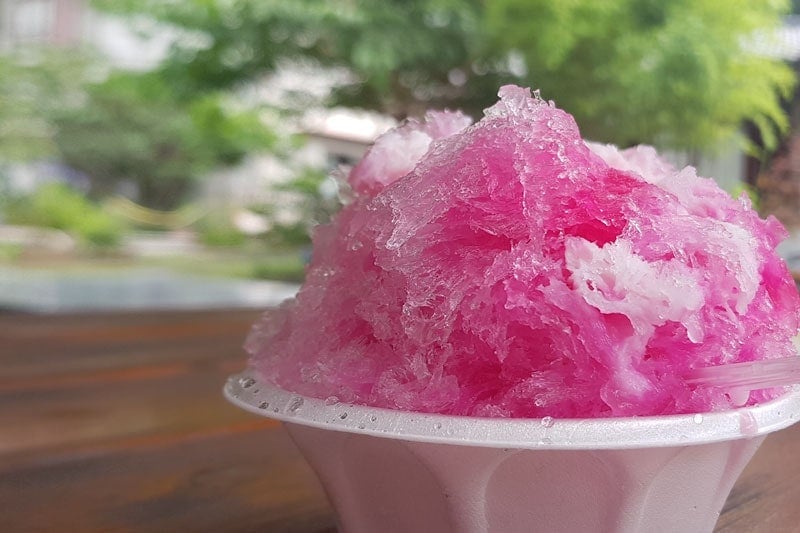
A favourite of mine that’s considered a cooling food is unagi, which is a freshwater eel that is grilled and basted with a soy glaze. Absolutely delicious and I’d eat it in summer or any time.
8. Keep an umbrella or lightweight rain jacket handy
Something you will notice about summer in Japan is that the grass is green, the rice paddies are thriving and the rivers and waterfalls are flowing impressively. This is because summer is also the wet season in Japan and you will likely see some rainfall or storms if you are here at this time of year.
It’s pretty easy to pick up an umbrella at a convenience store or many other places in the city or popular tourist areas but if you are heading out a bit further it can be worth having a compact option in the bottom of your bag. I think all of my folding umbrellas have been picked up on various trips to Japan, they do great low-cost options but also some really nice ones in cases that I haven’t seen at home and make a great and practical souvenir at the end of your trip.
9. If you’re melting in the heat, get out of the city
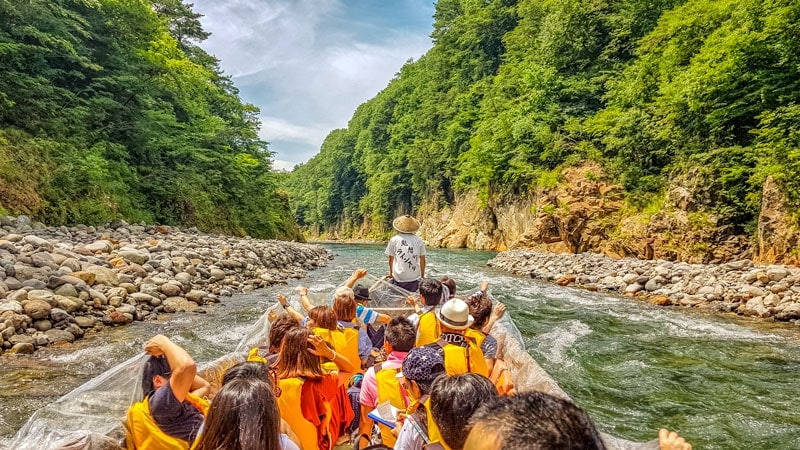
I highly recommend you consider this advice I received from Tokyo locals. Not only does the city feel hotter with the lack of airflow and so many other sticky sweaty bodies around but the temperature actually is hotter and the humidity percentage higher. Take a trip an hour or two inland and you’ll find those open green spaces like Nikko really are cooler and feel a lot more refreshing especially if you head down to the lake or out on the rivers.
10. Put on that insect repellent
The mosquitos are out in force in summer in Japan, I’m not talking about when you’re hiking through the marshes, this is in the city, in your apartment, everywhere. Take, or buy a good insect repellent, preferably one with Deet and use it every day, reapplying when you can. If you can take it I’d also have some antihistamine with you just in case you do get bitten.
My body temperature runs high a little high due to a medication I need to take which attracts the mosquitos like crazy so I do everything I can to avoid being bitten and scratching myself to insanity.
11. Pack your antiperspirant
Once the humidity kicks in you are going to sweat, it’s just reality, and for some reason, while you can buy deodorant in Japan, antiperspirant deodorant as we’re used to in Australia is almost impossible to find so I definitely suggest taking it with you.
I normally love picking up skincare and toiletries items once in Japan to try out something new but this is something I don’t leave home without.
12. Try the local Japanese body wipes
There’s a range of these wipes available but the ones I like best are the Biore smooth powder wipes. These aren’t just baby wipes or face wipes by another name. While they do freshen you up, wiping away odour, sweat and dirt that has stuck to the skin they do more than that.
They have a distinct cooling effect reducing the skin temperature by several degrees and leaving behind a super soft feel to the skin. Although I have sensitive skin they don’t cause irritation. I have to admit I was initially sceptical but brought back several packs for our Queensland summer and I wish I’d bought more.
3. Carry a lightweight towel
We usually have a lightweight towel in our bags for both local and international travel. We find them super useful when travelling around Japan. Of course, there’s the practical use of drying yourself, very handy when you find an unexpected ashiyu, a foot onsen, as we have in several unexpected places across Japan. Being an island, there are also many good beaches around Japan that can be a welcome break on a hot summer’s day.
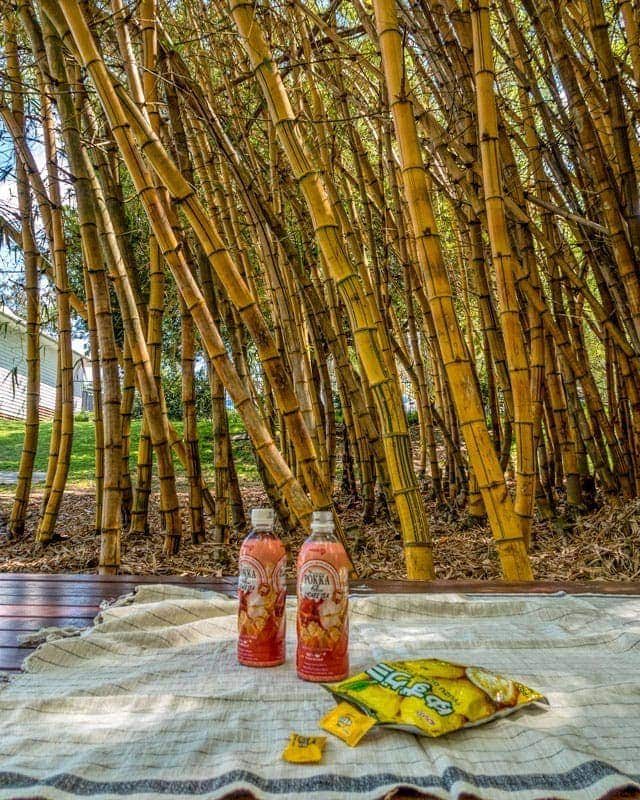
Even on a day trip from Tokyo, you have options such as Kamakura, Enoshima and Hayama-Isshiki beaches.
A towel is also useful as a picnic blanket in gardens such as the beautiful Shinjuku Gyoen or on trips out of the city. In the humidity, it can be useful to freshen up a little throughout the day and you can’t overlook the number of times you’ll wash and want to dry your hands at the chōzuya as you enter a shrine or temple.
We are currently carrying the sand free travel towels by Sumoii. They are lightweight, soft and of great quality. It folds up really small into its own carry bag that slips into the bottom of my tote or day pack and is surprisingly absorbent when using it as a towel.
14. There’s no shame in booking a hotel with air conditioning
If you’re not used to a hot humid climate, or if you just like an air-conditioned room to sleep in there are plenty of hotels that do offer the option but unlike many countries where it’s a given, do check that it’s available when you make your booking. While air-conditioning isn’t that common in Japanese homes or even in many businesses it’s becoming a lot more frequent and if having a comfortable place to relax and sleep will mean you enjoy your trip more then why not.
In Tokyo some options we have chosen to stay at and would revisit are:
- Tokyo Park Hotel was our most recent pick and is conveniently located as a stop for the airport limousine bus with both JR and 2 subway stations in very close proximity. There is a heap of restaurants nearby both modern and traditional along with the upmarket Shiodome shopping centre. Ginza is less than a 2 km walk away and it’s less than 1 km to Tsukiji Market.
- Hotel New Otani is centrally located in Chiyoda. The nearby Akasaka-Mitsuke subway station gives you access to the most useful lines and puts you less than a 10 minutes ride away from Ginza, Shibuya or Shinjuku. The hotel is surrounded by a 400-year-old Japanese garden that you are free to stroll through and we find the rooms here are bigger than average in the city making it a good stop if you’re going to be in town for more than a night or two and want to settle in.
- Tobu Levant Hotel Tokyo in Kinshicho. It’s convenient to Asakusa and the Skytree, there’s a great selection of restaurants and shops nearby and you can get a direct train or the airport limousine bus to here from either airport. It has both a JR and a subway station just a few minutes’ walk away making it convenient to get around.
15. Take a light jacket or wrap
I mentioned above that you won’t find air-conditioning everywhere but conversely, in places where they do have it such as some trains, shops and restaurants it can be turned down to a temperature that is downright chilly. In this case, you might just want something over your arms to be comfortable during dinner or when sitting for a while.
While it’s instantly refreshing coming into that icy blast the wave of humidity can hit you really hard when you step back out on the street, so carry a light layer.
Top Japanese summer destinations
I wouldn’t say anywhere is a ‘don’t go’ during the summer. If that’s when you have your vacation time or it suits you to travel, then go. We cover some fabulous locations all across Japan in our travel guide so please check that out if you’re looking for inspiration to get you started but there are a few places that are especially recommended for summer:
- If you’ve always wanted to climb the iconic Mount Fuji the season runs from early July until mid-September
- The Gion Matsuri, perhaps Japan’s most famous summer festival, takes place in Kyoto from the 17th – the 24th of July
- The beautiful floating shrine of Miyajima in Hiroshima has a fireworks festival in mid-August. Sunset is stunning but fireworks would be next-level amazing.
- The Nebuta Matsuri festival takes place in Aomori and runs for 5 days in early August with incredible handmade floats
- Hokkaido, Japan’s northernmost main island is covered in snow for much of the year but during summer its rural and natural spots would be absolutely stunning to visit. As a lover of wildlife and an enthusiastic birder, I think this would be a wonderful time to explore the northern parts.
- I recently discovered the green beauty of Nikko in summer and had to add that to this list too. The vivid green of the forest through to the rice crops combined with the waterfalls and rivers flowing with the summer rains make it a stunning time to visit
If you found this article useful please consider saving it to Pinterest. It makes it easy for you to find it again, it helps us, and it helps other travellers to find the information they are looking for.
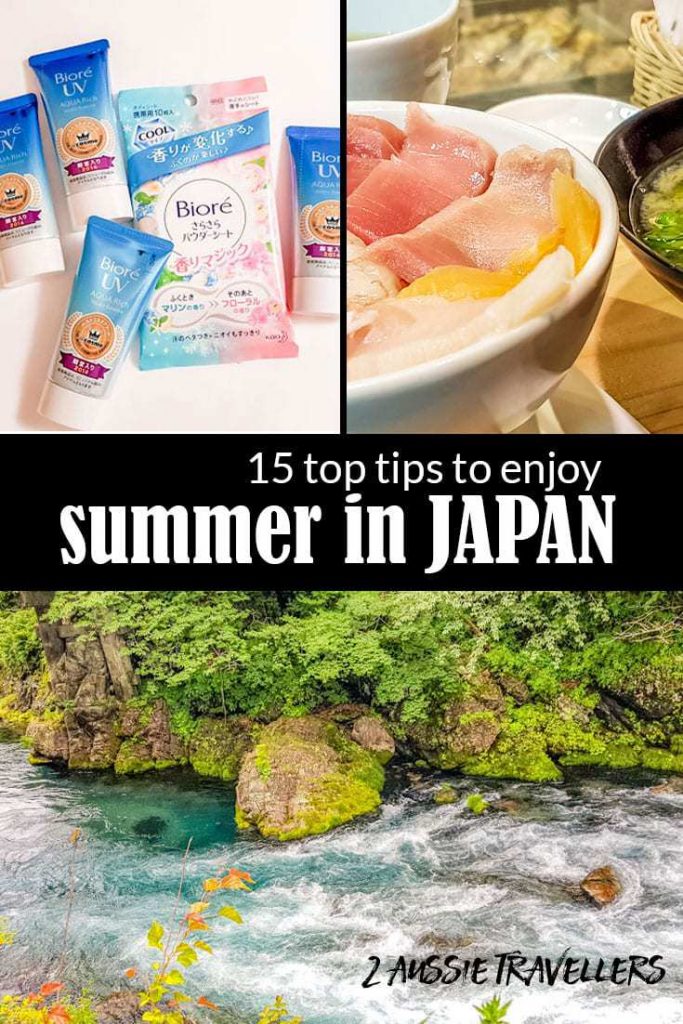
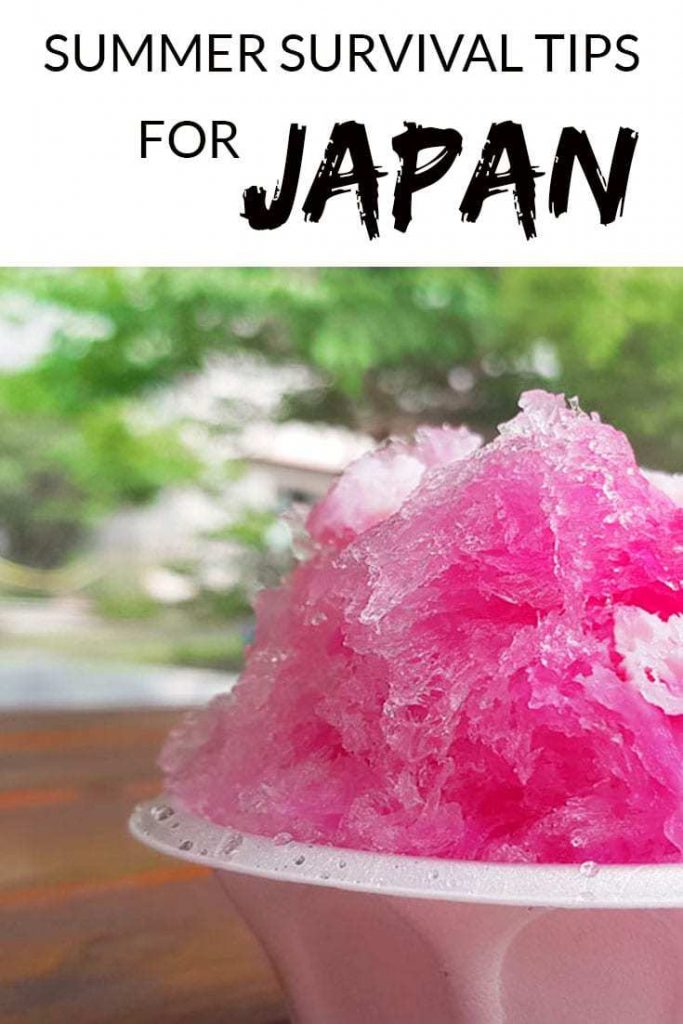
Have you visited Japan during the height of summer? Did you come across any other tips you can share to make a visit at this time of year even better? As usual, if you have any questions for us please ask.
Ryan Biddulph
Friday 17th of August 2018
I find it neat Toni how Japan's climate mirrors what I experienced growing up in NJ in the USA. Seasonality, contrast, all that good stuff. I love the tropics but miss fall and even winter sometimes. So for the past 2 years I've been treated to each season, living in the US for much of the year. Excellent post as always.
Ryan